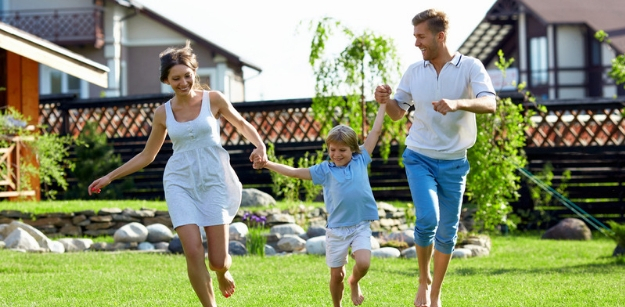We all want to live in a healthy environment where we are not exposed to toxins or physical conditions like excessive cold, heat, and dampness that could make us sick and increase the risk factors for heart attacks, stroke, cardiopulmonary diseases, and respiratory illnesses. We also want to live in a safe environment where there aren’t unnecessary risks of falling because the house has been badly built or not maintained. Many of us do have this luxury, but millions of people don’t.

Houses in the world’s cities are of particular concern, particularly since it is predicted that the global urban population will double by 2050 and with it, a general increase in the demand for housing. Since millions of people worldwide already live in slums, it is critically important to improve housing conditions in developed and developing countries and to do everything possible to reduce health risks at home.
While those living in poverty are more likely to be exposed to unhealthy, high-risk conditions, the reality is that even ordinary suburban homes are at risk. By the same token, every type of home, no matter how elaborate or basic, it may be improved to make it energy-efficient and consequently healthier and safer.
The World Health Organization (WHO) is one of many global bodies that suggest effective strategies that can be taken without necessarily making a major financial investment. Some of these can be undertaken by individuals, while others do require the input of professionals including those who offer mechanical engineering services.
Basic Strategies to Ensure Homes are Energy-efficient
Key to the concept of energy-efficient homes is to create a “thermal envelope” around the house that is adapted to the local climate. It involves shading buildings with shrubbery to protect them from the sun in hot areas and taking steps to absorb solar radiation while preserving indoor heat in temperate areas, installing good insulation and blocking air leaks that create drafts.
It also involves using natural (or passive) ventilation to help reduce indoor temperatures in hot-climate countries and when the weather is warm. Natural ventilation also helps to reduce health threats from damp interiors and mold growth.
Many people, even those who live in relatively affluent homes, see standard air conditioning units as the primary solution to hot conditions. But, not only are they noisy, they also contribute to the impact of urban heat-islands caused by human activities in urban areas as well as waste heat that is generated by using electricity, and which can exacerbate the impact of heat waves. The effect of urban heat-islands on human health ranges from general discomfort and respiratory difficulty to heat cramps, exhaustion, and even heat-related mortality. The United States Environmental Protection Agency (EPA) warns that urban heat islands can affect an entire community’s quality of life. Additionally, they increase electricity demand and sometimes cause power outages. A good HVAC engineer will be able to advise you.
In developing countries where fossil fuels are used for cooking, WHO is involved in housing strategies that encourage biomass and biogas stoves for cooking as well as more energy-efficient heating methods to both improve thermal comfort and reduce indoor air pollution that threatens to damage health.
Many homeowners are now turning to practical and highly efficient energy storage system. This helps them store all the solar energy that has been generated through the solar panels. They are then using the same to power their homes through the day. With solar energy technology evolving and advancing by leaps and bounds, most homeowners are now seriously considering solar energy for their needs and requirements.
WHO Housing and Health Guidelines
Recognizing that improved housing conditions can reduce poverty, increase the quality of life, prevent disease, and save lives, the WHO has developed housing and health guidelines that suggest strategies for reducing household crowding, make housing accessible to people who are functionally impaired, and are equipped with safety devices. Housing should also be sufficiently durable to provide shelter from the elements and provide uncontaminated water.
Recommendations relating to energy-efficiency target insulation and strategies to protect residents from the harmful effects of cold and excessive heat. By installing heating that is energy-efficient, indoor temperatures will reduce carbon emissions, reduce air pollution, support health, and lower costs.
Of course, improving the energy-efficiency of homes might not improve the health of everyone, particularly people who have overweight issues and hypertension that probably wasn’t caused by problems relating to energy-efficiency. Research shows that the condition of those suffering from sinusitis and asthma often worsened. But, on the other hand, there is evidence that those who are exposed to conditions associated with a lack of energy efficiency do find that their health is compromised.
On a positive note, in New Zealand, an insulation program was found to have resulted in reduced hospital costs for those involved, with fewer patients being readmitted and transferred, and with those who were admitted staying for shorter periods of time. In Cape Town, South Africa, a low-income housing project that involved installing roof insulation and solar water heaters resulted in the improved respiratory health of residents in addition to improved economic circumstances because of reduced costs.
Ultimately, people who live in healthy homes are more likely to be happy and healthy. It’s as simple as that, and energy-efficient houses are definitely healthy, wherever they are in the world.